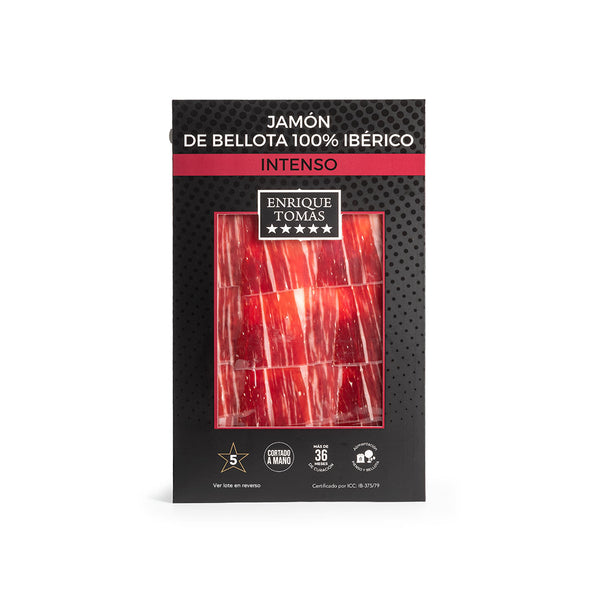
Jamón de Bellota Ibérico: what is it and how is it made?
Are you familiar with Iberian acorn-fed ham? Do you know why it's called that and how it's made? In this post, we'll answer all your questions about this delicatessen product of Spanish cuisine. Acorn-fed ham is considered a gastronomic gem worldwide for three main reasons: the breed of the pig it comes from, the feeding and care the animal receives during its life, and the treatment of the ham in its curing process. Do you want to become an expert in the world of ham?
Let's delve into each of the reasons!
The Iberian Breed
The Iberian pig is a unique species on the Iberian Peninsula, shared between Spain and Portugal, and it's highly prized in the gastronomic sector because it's responsible for producing the famous Iberian acorn-fed ham. This type of pig has genetic characteristics that set it apart from other animals of the same species, the most prominent being its ability to intramuscularly infiltrate fat.
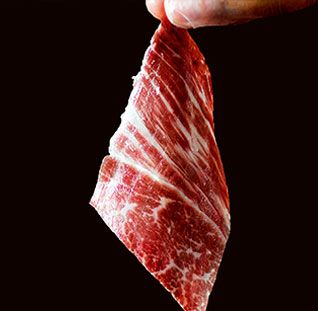 Intramuscular Fat
Intramuscular Fat
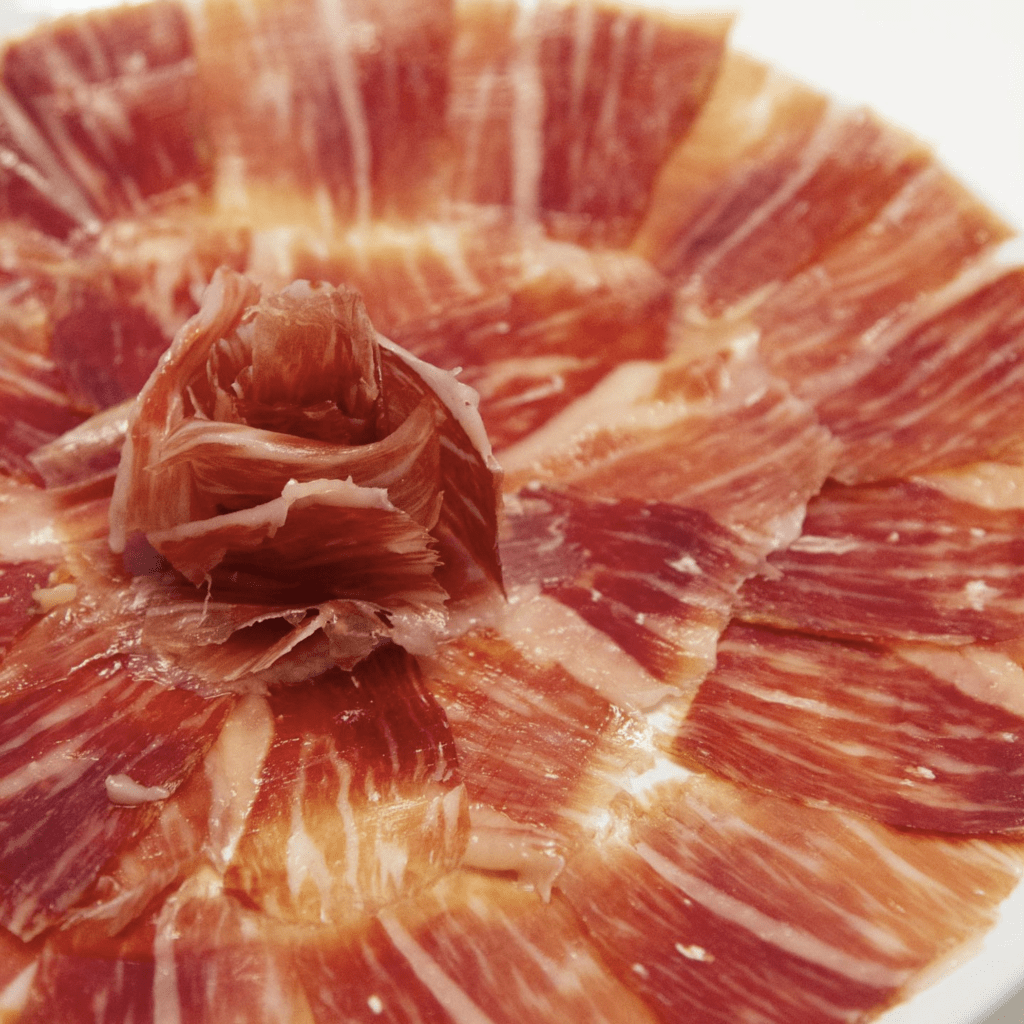
Iberian Acorn-Fed Ham
For the production of Iberian acorn-fed ham, all those pigs whose mother and father are 100% Iberian are included. The offspring of this pig, and therefore the products produced from them like ham, can have different purity percentages: 50%, 75%, or 100%.
You'll understand it better in the following infographic!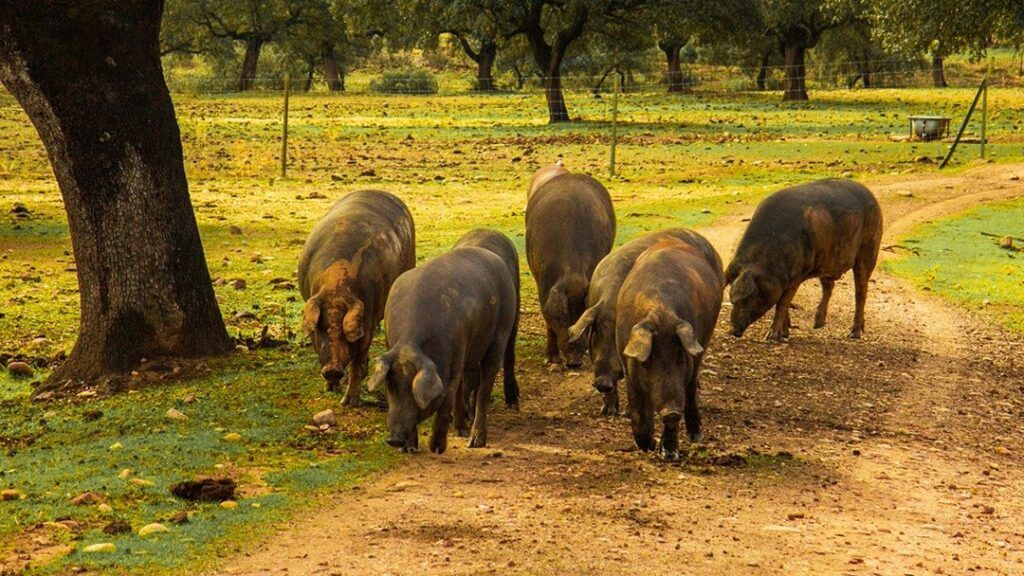
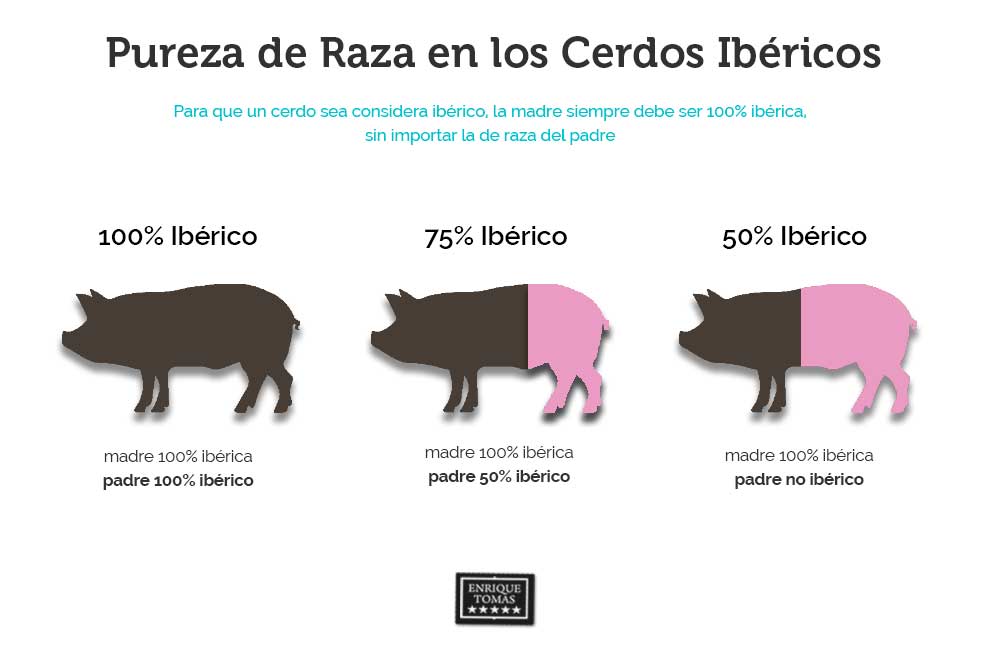
This pig breed has genetic characteristics that differentiate it from other animals of the same species, with one of the main ones being its ability to infiltrate fat into the muscle.
In the production of Iberian ham, not only the breed is taken into account, but also the process of raising the animal, as well as the place where it lives and its diet.
Have You Heard of "La Montanera"?
The Iberian pigs used to produce Iberian acorn-fed ham are the ones that undergo what is called "la montanera". What is it? It's the final phase of Iberian pig breeding, during which they graze freely in the "dehesa" and feed on "acorns" during the fall and winter months.
The "dehesas" are located in Extremadura, Salamanca, and Andalusia; these places have the most favorable climatic conditions for developing acorns: the famous fruit that Iberian pigs feed on, giving rise to Iberian acorn-fed ham. This fruit contains exquisite oil that the pig infiltrates into its muscle, causing the prized fat content in acorn-fed ham after its curing. Moreover, this characteristic gives the product its name.
 Iberian Pig Acorns
Iberian Pig Acorns
The Curing of Acorn-Fed Ham
If there's one thing that distinguishes acorn-fed ham, it's that it's a very juicy and flavorful cured meat, resulting in ham that's incomparable to any other on the market. This result is not only due to its origin and diet but also attributed to the curing process. At Enrique Tomás, we refer to this part as "the cooking." It's a moment when all the skills of our master ham artisans come together to make the most of each piece.
This "cooking" is nothing more and nothing less than the conditions in which the leg is preserved, the amount of salt used, the storage temperature, and the curing time. In essence, ham is cured with time, wisdom, care, and salt.
In the case of acorn-fed ham, from the birth of the animal to the end of the process and purchase, it can take up to five years. For its curing, the ham needs to be salted and left to cure at an exact temperature. This curing process lasts between thirty-six to forty-eight months, depending on the weight of each piece.
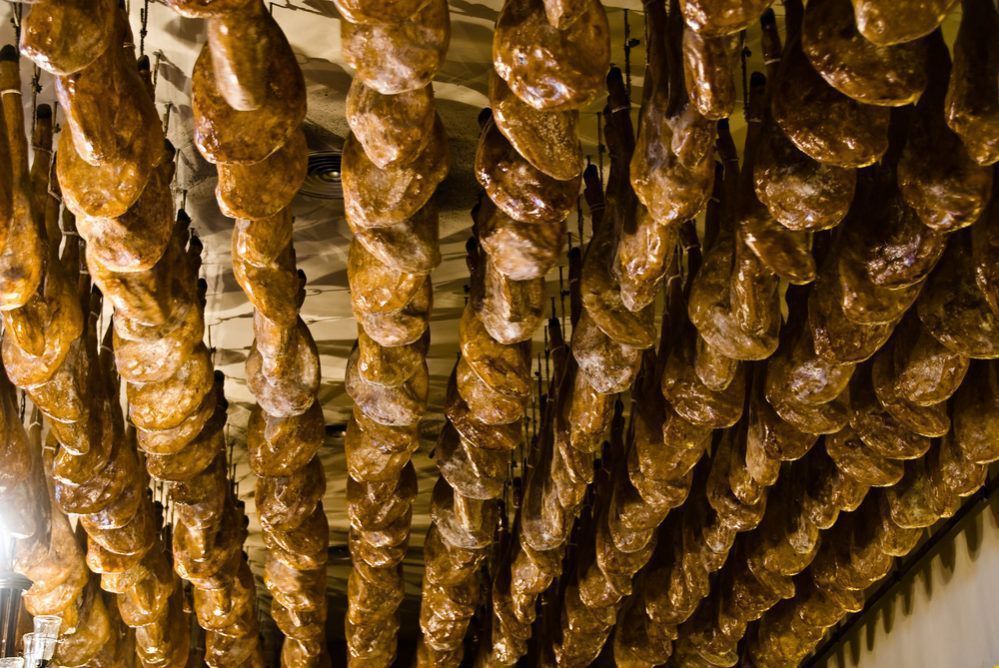 Curing of a Ham
Curing of a Ham
100% Iberian Acorn-Fed Ham: The Authentic "Pata Negra"
When we say that a ham is "pata negra", we're always referring to the purity of the Iberian breed, meaning that the pigs from which this product comes have both parents that are Iberian pigs, guaranteeing that their meat is 100% Iberian and giving it a unique category.
In terms of diet, of course, these pigs have also undergone "la montanera" and have grazed freely in the countryside, allowing them to develop strong muscles and feed on acorns, wild fruits, and other wild plants.
The purity of the breed enhances the flavor of each piece of 100% Iberian acorn-fed ham due to its great capacity to infiltrate fat into the muscle. Try it, and you'll find its taste irresistible! It practically melts in your mouth.
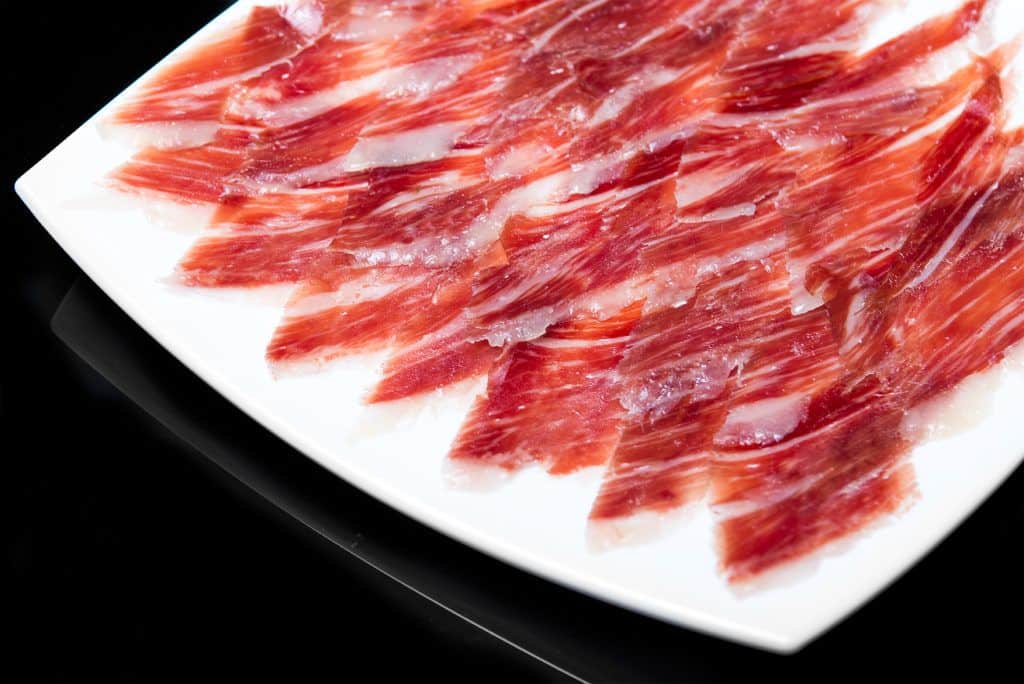 Pata Negra Ham
Pata Negra Ham
How to Distinguish Acorn-Fed Ham from the Rest?
At Enrique Tomás, we offer different varieties of acorn-fed ham based on the percentage of Iberian breed purity. That's why you'll find our Iberian acorn-fed ham with a red label and our 100% Iberian acorn-fed ham with a black label, as you can see in the image.
Buy Iberian Acorn-Fed Ham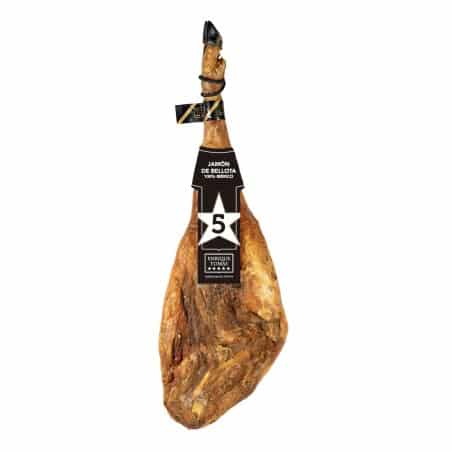
100% Iberian Acorn-Fed Ham
At Enrique Tomás, we're committed to teaching you about the types of ham and how to differentiate them; only then can we achieve our goal: for you to enjoy it to the fullest. If you become an expert in the types, you'll know how to identify the one you like the most. Plus, you'll find them all in different formats to choose the best one based on your needs or goals.
Take a look at our online store!


